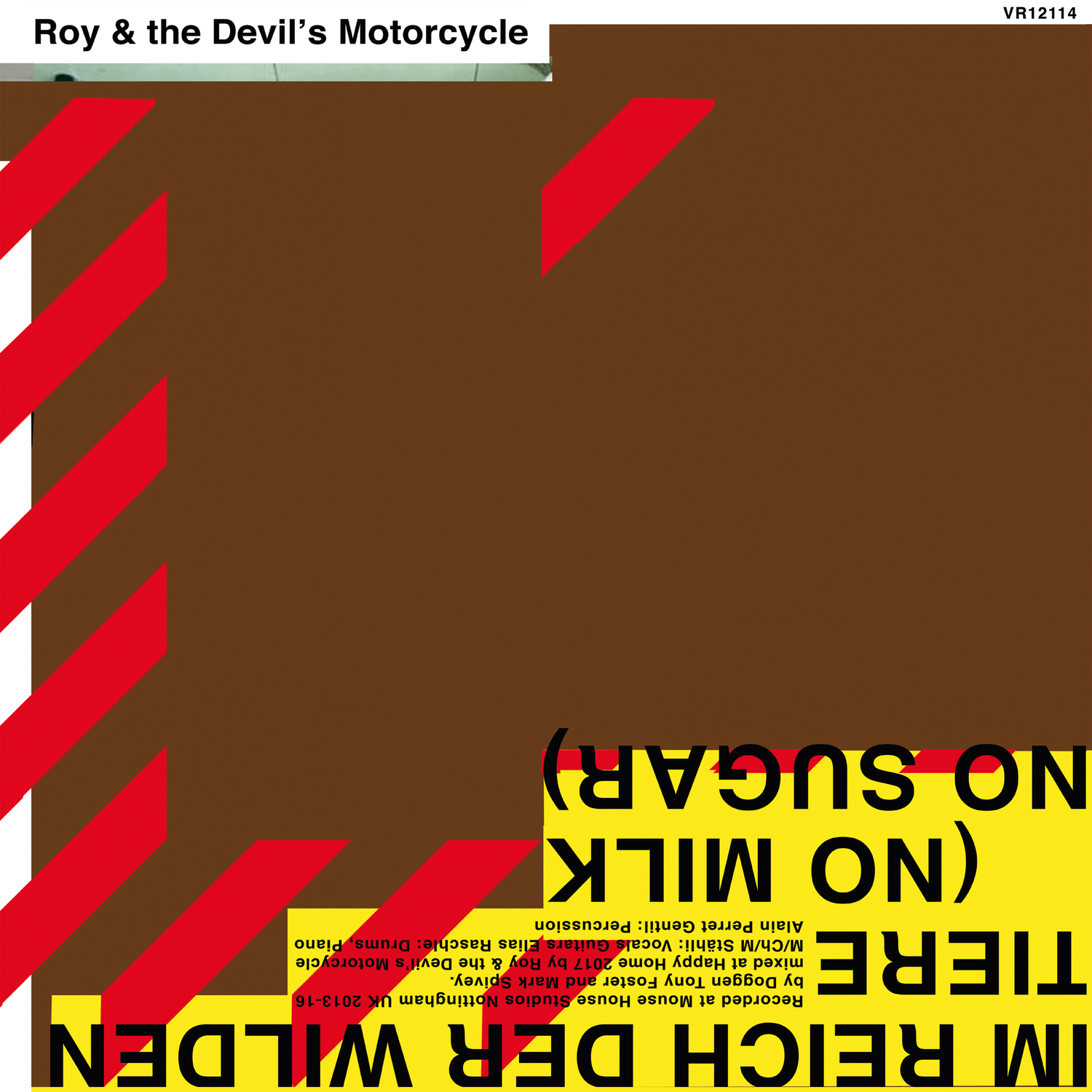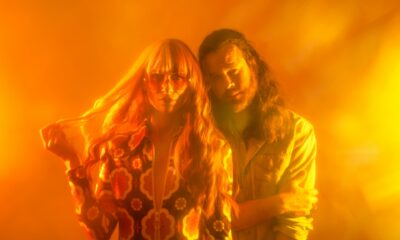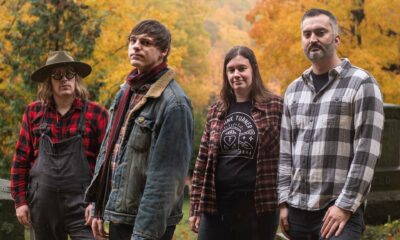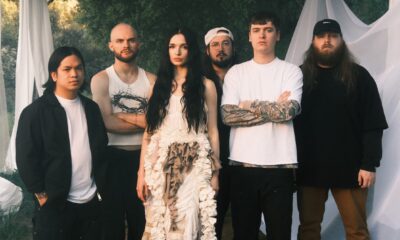Alternative/Rock
Growing Pains: A conversation with the Stähli Brothers on 30 years of Roy And The Devil’s Motorcycle

A band’s obscurity in other parts of the world outside their homeland plays in their favour as a new experience for an untapped audience. With Roy and The Devil’s Motorcycle’s 30 year+ career built throughout the European markets, audiences around North America remain unaware of this group and their respectable body of work. Roy and The Devil’s Motorcycle formed in 1989 in the Swiss town of Thun, between the teenage Stähli brothers (Markus, Matthias, and Christian). The brothers had no experience playing instruments when they decided to form a band, and the powerful sets they witnessed at their local venue from performances by the house music DJs of Detroit, Townes Van Zandt, Tav Falco, and Spaceman 3, pushed the three to try and learn along the way.
A band’s obscurity in other parts of the world outside their homeland plays in their favor as a new experience for an untapped audience. Thirty years later, the band remains with the original members still intact, and tours across Europe with the likes of Spiritualized and Jon Spencer Blues Explosion tucked in the Roy’s legacy. Across five albums, the band’s sound takes influence from early 20th century American blues and folk music coupled with the dissonance of psychedelic rock and garage rock’s crude production. Since the release of their 2014 film score to the Swiss Hells Angels documentary Tino: Frozen Angel, the band has seen a surge of recognition outside of select touring with the release of a 2019 documentary of the band by filmmaker Silvia Bergmann (Learning To Lose) and a 2020 re-release of their long out of print debut album, Good Morning Blues.
2021 sees Roy and The Devil’s Motorcycle adding to their discography with their sixth release titled Im Reich der Wilden Tiere (No Milk No Sugar) on their longtime home, Voodoo Rhythm Records.
Beat-Man, Voodoo Rhythm proprietor, shares his thoughts on the first band he signed to the label in the early 1990s.
“The Roy’s are definitely one of the most unique bands on Voodoo Rhythm and this doesn’t help commercially but I believe in all they do. Back in the 1990s, they were doing these mind blowing home recordings that were so off the grid in terms of production and music style, it was similar to what Kraftwerk and Neu were doing, you couldn’t really categorize them.”
Joining us today are the Stähli brothers who recently spoke with Matthew Hutchison, discussing details about the new album and reflecting on the band’s legacy.
The band is also pleased to be debuting their brand new music video for “Learn To Lose,” which can be found on Im Reich der Wilden Tiere (No Milk No Sugar), which was just released on May 18th. Commenting on the energetic new song, singer and guitarist Markus Stahli said, “Turn up your stereo, open the windows, and leave the house!”
Im Reich der Wilden Tiere (No Milk No Sugar) not only marks the sixth album in your catalogue, but you’re going on 31 years of you and your brothers being in a band together, a rare feat. Did you ever see yourself doing this for as long as you all have? Have you given some thought to that and been able to look in your guys’ catalogue to reflect any growing pains or developments you all went through with each album released? Where does this album stand amongst your story?
Markus: “It’s our sixth or seventh album, there was a record called Black Swan at Christmas released 2001 as a 10 inch limited edition of 300 copies. We know each other since always that’s true. Developments, growing pains? Every relationship or situation is fragile. but we just started and will go on as long as we are inspired and develop something together on, for us, unknown terrain, musically and personally. The new album? we are +/- adults now. Im Reich der Wilden Tiere was recorded around 2015 and marks the end of the heavy loud period. The first 25 years.”
Christian: “I never met musicians where I thought I could do something more interesting, so it’s still going on. When I listen to the older albums, I can see and hear that there was always a progression in developing the structure of the songs, the sounds, the recording technique, the lyrics, the covers, etc.”
Matthias: “Seven albums in 31 years don’t look like proper career planning. However, our band still exists, and we still play every Sunday afternoon, and it’s very likely we haven’t heard of the best of the Roys yet. Im Reich der Wilden Tiere is pretty much band music, and it was the wish of Markus to mix the record on his own, without endless discussions. So what I learned is to shut my mouth and trust in the band members.
Forming a band with your brothers is probably not the easiest way to develop your own personality too. It took me years and still needs some more to overcome the childhood pattern we have regarding ‘older brother, younger brother, etc.’ At the time the Roy’s started, all my colleagues wanted to be in a band. I wanted my own too, but the thing was, I didn’t want my band to last for only two years and sound like Dire Straits. So I decided to start the band with my two younger brothers.”
How would you best describe Roy And The Devil’s Motorcycle sound to the North American/Canadian audience who are largely unfamiliar with the band’s legacy?
Markus: “It sounds like an invitation. Live.”
Matthias: “I would say the sound of the Roy’s is based on the spirit and optimism of early rock n’ roll and everything else that attracted us throughout our development. You might not think this when you hear an album like Good Morning Blues, but if you give some space to the hairy side of life, it makes that album easier to hear. Last week we performed in Basel on air for Radio X, and there were only a few friends around because of COVID. There was a woman who watched us play, and she told me after the concert, ‘this room was the right place tonight; it was the place I wanted to be and nowhere else.’ I think that’s what our sound is about. Focus on what is considered essential. And, of course, brag a little.”
Has a tour in either country ever been prospected or strongly considered in the past during an album cycle by the band or through an extended opportunity from another band over here? Have you, yourself, visited the United States or Canada before, and if so, what were your impressions compared to Switzerland’s culture?
Markus: “Doggen Tony Foster is a very friendly person, a patient host and he likes sportscars, cabriolets. He wanted to catch the sound, and worked very professional, never in a hurry always ready to try something. He has a very big knowledge, but never said let’s do it like this or that… but cared for a good mood. That’s what I learned from him.”
Aside from the covers on this album, including a new version of “Tears on My Pillow,” which also appears on 2012’s Tell it To The People, were any of these songs carryovers from prior sessions or explicitly written for this album?
The xylophone percussion in this album is a new facet of your work. The extensive instrumental “Powwow Highway 89” is playing out like an old 8mm film with its repetitive chord polyphonies and loops. What is the inspiration behind this song?
Markus: “At the Mouse House studio in Nottingham, we recorded the songs we played live at concerts at that time. To put the same song on the following record again, is uncommon, I like that. and the vocals are more in the focus. ‘Mo rice’ is the only song on the record that was created in the studio, Elias came up with the piano melody and metronome, we jammed and delated the guitars later. Everything else was overdubbed at the Happy Home Studio after I found the right sound for the metronome. ‘Powwow Highway 89’ was recorded in two or three takes. The song was created for the live set – raw energy. While mixing it, I thought about 23 minutes over Brussels.”
Christian: “I think the inspiration for my riff on ‘Powwow Highway 89’ comes from the Mali band Tinariwen. We mostly do three or four takes to record a song; primarily, the first version is not perfect but the best.”
Matthias: “Im Reich der Wilden Tiere is pretty much band music, except ‘Mo Rice’ is based on Elias’ xylophone riff. He was our drummer and 25 years younger than me with an incredibly creative mind. He is now running his project, Augenwasser; keep an eye out for it!”
How did working with Doggen enhance the overall production for Im Reich der Wilden Tiere (No Milk No Sugar)? What did you all take away from that experience working with him and do you feel that the results on this LP would be much different if he weren’t involved?
Is there anything significant production wise or writing wise you learned from him or took away from the experience working alongside him?
Christian: “You know Doggen is a really cool guy; we like him a lot. The recording situation was different because we had limited time to work and our advantage here was that we didn’t have to take care of technique. Otherwise, my brothers always have to switch between being the recording guys and artists. I’m not able to do that.”
Matthias: “I think the main things Doggen did for us are the following: He believed in our band, made us feel good, kept us from fighting each other, and made us work together constructively. He didn’t intervene in our songwriting; he just let us do our thing. I remember him as a friend.”
Can you talk about the timeline for recording the album? Were multiple trips undertaken from Thun to Nottingham for tracking or did you all stay for an extended period to record everything in one trip?
Markus: “Tony invited us to record at his Mouse House Studio while we were touring in England with Spiritualized. Im Reich der Wilden Tiere was recorded in four sessions, 2013 to 2016 while touring and one extra session. We recorded a lot more songs than finally are on the album.”
In the seven years leading up to this release from 2014’s Tino: Frozen Angel, a documentary about Roy And The Devil’s Motorcycle has premiered (Learning To Lose) and Voodoo Rhythm re-released the long out of print Good Morning Blues EP.
Both these releases mark a sort of history lesson of the band’s work. What were your initial feelings about both projects, and were there any reservations towards either project you all shared at first? Now that the film has premiered and the EP is out again, what are your thoughts?”
Markus: “We are glad that Voodoo Rhythm (re)releases our old and new stuff. And we can do whatever we want, so it seems. Not many artists can say that. We have time for The Muse. The film is a project by Paul Mayhew, who gave all the recorded stuff to Silvia Bergmann to cut it and make the film. They were free to do whatever they want. I like the film, it gives you an impression of what the Staehli brothers are.”
Christian: “We recorded Good Morning Blues with Kat Aellen in our rehearsal room in Oberdiessbach. I was delighted to record with her. She was ahead about technique then. We learned a lot about where the borders of recording and how far you can go over.”
Matthias: “Both projects have something to do with the past and make me feel older. Good Morning Blues is a contemporary document from 1996 that is left almost original. We talked about putting another song on the re-issue recorded during the session with Kat but left off the record but decided to keep the release like it is. Learning To Lose is different; I can see the band through someone else’s eyes, through the eyes of Silvia Bergmann and Paul Mayhew, together with Tea Soza (Voodoo Rhythm Records employee).
We were a loose team that toured Europe for about five years. The film is probably focused a little too much on the bright side of band life, but I still like it a lot. Listening to Good Morning Blues or watching Learning To Lose makes me smile a bit… not bad this band, really not bad!”
Next year will be the tenth anniversary of Tell It To The People, are there any plans to mark the occasion in the post-pandemic world? Are you at liberty to discuss potential touring plans supporting Im Reich der Wilden Tiere (No Milk No Sugar) when the time is appropriate?
Markus: “That’s past. We are mixing songs for a next record, working title is nighttrain to waslawa and we record with Benny Van Daeniken our current drummer new songs at the happy home studio, that’s future music. We would like to tour. Everywhere. But need an international booking agency. Or a simple invitation to play a few shows somewhere. We are ready.”
Christian: “Yeah, I would like to go on tour anywhere. But first this COVID shit has to cool down.”
There’s a consistent aesthetic in each of the band’s album artwork and your overall imagery. Who is responsible for the design concepts for each release?
Markus: “No one is responsible, I do the artwork/design (except for Tino Frozen Angel and Rantings of a Free Thinker). I really like to do that.”
Before your brothers and you say it’s all set and done with Roy And The Devil’s Motorcycle, is there a specific project or goal you all want to accomplish together before retiring the band for good?
Markus: “I don’t think we will retire the band, we will go on. When circumstances allow it. But as I said before every situation is fragile, each one of us is asking himself does it still makes sense to play together and you can’t always say yes, for various reasons. We know each another. But when you play together and it sounds now! It satisfies. That’s the specific project and goal.”
Christian: “I don’t think we’ll stop the band, we’ll make some wind to sail on.”
-

 Music6 days ago
Music6 days agoTake That (w/ Olly Murs) Kick Off Four-Night Leeds Stint with Hit-Laden Spectacular [Photos]
-

 Alternative/Rock16 hours ago
Alternative/Rock16 hours agoThe V13 Fix #011 w/ Microwave, Full Of Hell, Cold Years and more
-

 Alternative/Rock1 week ago
Alternative/Rock1 week agoThe V13 Fix #010 w/ High on Fire, NOFX, My Dying Bride and more
-

 Features6 days ago
Features6 days agoTour Diary: Gen & The Degenerates Party Their Way Across America
-

 Culture1 week ago
Culture1 week agoDan Carter & George Miller Chat Foodinati Live, Heavy Metal Charities and Pre-Gig Meals
-

 Music1 week ago
Music1 week agoReclusive Producer Stumbleine Premieres Beat-Driven New Single “Cinderhaze”
-

 Indie16 hours ago
Indie16 hours agoDeadset Premiere Music Video for Addiction-Inspired “Heavy Eyes” Single
-

 Alternative/Rock1 week ago
Alternative/Rock1 week agoThree Lefts and a Right Premiere Their Guitar-Driven Single “Lovulator”














